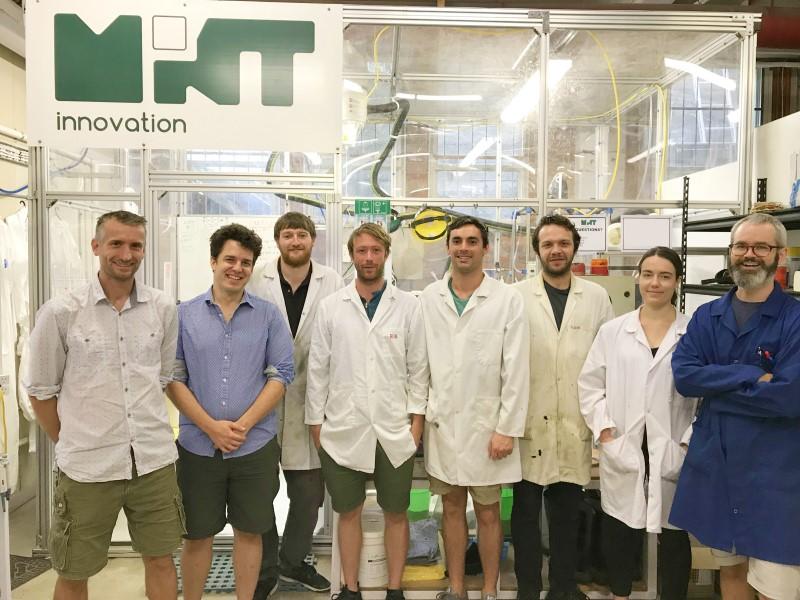According to a recent report on electronic waste by the UN-funded International Telecommunications Union (ITU), New Zealanders generate approximately 95,000 tonnes of e-waste per year. While this is a drop in the bucket of the 45 million tonnes of e-waste estimated to have been generated globally in 2016, it still contains significant amounts of toxic and valuable metals. Printed circuit boards, for instance, are up to one-fifth of their weight in copper, and contain gold at over twenty times the concentration found in typical mining ore. The same ITU report estimated that NZD90 billion of material value could be recovered from the world’s annual e-waste output, including NZD32 billion in gold.
This “urban ore” of e-waste is therefore an attractive one to recycle, but “the trick is being able to recover the valuable metals from such a heterogeneous feedstock,” says Dr Ollie Crush, a scientist at Auckland-based cleantech company Mint Innovation.
Current approaches to responsibly recycle e-waste involve its aggregation and shipment to specialised smelters in Europe and Japan. (Fun fact: the medals at the Tokyo 2020 Olympics will be made from metals recovered from e-waste.) However, this isn’t the norm: most e-waste simply heads to landfill in the “too hard basket”, or ends up in developing nations where the metal recovery methods used incur a huge cost to human and environmental health. This is in spite of a number of regulations being in place to hinder such cross-border trade, including the Basel Convention on the international movement of hazardous waste. As for New Zealand, a number of voluntary product take back schemes exist to try to tackle our own generation of e-waste, but a compulsory product stewardship scheme is yet to be mandated under the Waste Minimisation Act (2008) (for those interested, a review of this was commissioned by the Ministry for the Environment in 2014). New Zealand simply doesn’t produce the volumes that would justify the construction of a high-CAPEX specialised smelter.
This problem of scale exists across the globe. To address this, Dr Crush and the scientists at Mint are developing a small-scale technology which, they say, will enable valuable metals to be extracted from e-waste in a local manner. Jason Herbert, working on business development at Mint, says “We are aiming to build low CAPEX & OPEX plants that are able to process 2,000 tonnes of scrap printed circuit boards per year. With reactor sizes in the order of 200 hectolitres, we think each plant will have the footprint of a microbrewery, and will be able to serve individual cities or regions”. The key technology behind their process is a form of biometallurgy, where specialist microbes are used to scavenge specific metals from simple chemical systems. This enables the concentration of valuable metals from complex inputs at a low cost.” Currently at a pilot scale, Mint has recently partnered with Remarkit, one of NZ’s largest e-waste recyclers, and received funding from NZ’s Waste Minimisation Fund to take their technology further. “We’re currently drawing up the designs & specifications for a NZ-scale plant capable of handling 200 tonnes of circuit boards per annum,” says Nick Moleta, Mint’s process engineer. “There’s some interesting chemistry involved, but it all runs at ambient pressure and temperature, so that should keep capital costs down.”
The end goal is to provide cities or large regions the technical capability to locally recover value from e-waste, rather than landfilling or exporting it. And when developing nations catch up with their enforcement of environmental regulations, Mint wants to be there with a ready solution.
Circuit boards a gold mine
Electrical Technology, Sustainability
Wednesday, 07 March 2018



